

The Celtic Goddess Epona that Rode Swiftly Across the Ancient Roman Empire. The Legendary Origins of Merlin the Magician. Most people today have heard of Merlin the Magician, as his name has been popularized over the centuries and his story has been dramatized in numerous novels, films, and television programs.

The powerful wizard is depicted with many magical powers, including the power of shapeshifting and is well-known in mythology as a tutor and mentor to the legendary King Arthur, ultimately guiding him towards becoming the king of Camelot. While these general tales are well-known, Merlin’s initial appearances were only somewhat linked to Arthur. Aquae Sulis: The Epitome of Roman Syncretization with the Celts. The Roman bath system was one of the most intricate and complex of the ancient world.
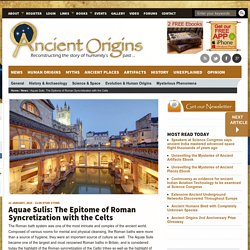
Composed of various rooms for mental and physical cleansing, the Roman baths were more than a source of hygiene; they were an important source of culture as well. The Aquae Sulis became one of the largest and most renowned Roman baths in Britain, and is considered today the highlight of the Roman syncretization of the Celtic tribes as well as the highlight of the Roman bath system outside the city of Rome. The Lost Land of Lyonesse – Legendary City on the Bottom of the Sea. In Arthurian legend, Lyonesse is the home country of Tristan, from the legendary story of Tristan and Iseult.
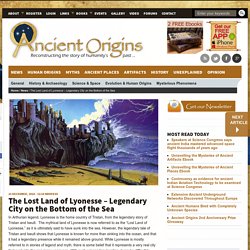
The mythical land of Lyonesse is now referred to as the “Lost Land of Lyonesse,” as it is ultimately said to have sunk into the sea. However, the legendary tale of Tristan and Iseult shows that Lyonesse is known for more than sinking into the ocean, and that it had a legendary presence while it remained above ground. While Lyonesse is mostly referred to in stories of legend and myth, there is some belief that it represents a very real city that sunk into the sea many years ago. With such a legendary location, it can be difficult to ascertain where the legend ends and reality begins.
The Irish Story and Legend of Cu Chulainn. Cu Chulainn is one of the most famous Irish mythological heroes.

He appears in the stories of the Ulster Cycle, and Scottish and Manx folklore. He was said to be the son of Deichtine and the god Lugh, and the nephew of Conchobar mac Nessa, the King of Ulster. His given name at birth was Setanta but he gained the name Cu Chulainn, meaning ‘Culann’s Hound’ after he killed a ferocious guard dog belonging to a smith named Culann. Cu Chulainn offered to take the place of the guard dog until a replacement could be reared. The nature and danger of the legendary Kobold. In ancient folklore, the kobold is a small, pointy-eared, goblin-like creature with a short-temper and a mischievous spirit.
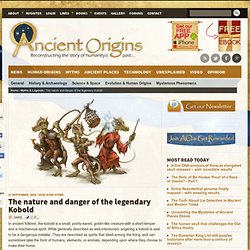
While generally described as well-intentioned, angering a kobold is said to be a dangerous mistake. They are described as spirits that dwell among the living, and can sometimes take the form of humans, elements, or animals, depending upon where they choose to make their home. What is most intriguing about the kobolds is not only their persistence into modern folklore but the way in which they seem to transcend various provinces and faiths. Known in England as brownies, in France as gobelins, in Belgium as kabouters and so on, kobolds are still carefully considered and respected in Germanic culture. However, the kobold does not first come from Germany but rather Greece. Are tales of mythical mermaids inspired by a real-life medical condition?
Mermaids have occupied our imagination for thousands of years, originating in ancient Assyria with the legend of goddess Atargatis, whose worship spread to Greece and Rome.
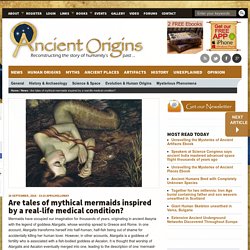
In one account, Atargatis transforms herself into half-human, half-fish being out of shame for accidentally killing her human lover. Boudicca, the Celtic Queen that unleashed fury on the Romans. We British are used to women commanders in war; I am descended from mighty men!
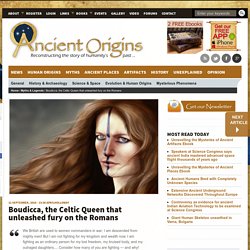
But I am not fighting for my kingdom and wealth now. I am fighting as an ordinary person for my lost freedom, my bruised body, and my outraged daughters.... Tel.archives-ouvertes. Discussion:Sidh. Une page de Wikipédia, l'encyclopédie libre.
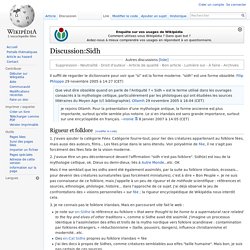
Il suffit de regarder le dictionnaire pour voir que "sí” est la forme moderne. "sidh" est une forme obsolète. Filip Phloppe 29 novembre 2005 à 14:27 (CET) Que veut dire obsolète quand on parle de l'Antiquité ? « Sidh » est le terme utilisé dans les ouvrages consacrés à la mythologie celtique, particulièrement par les philologues qui ont étudiées les sources littéraires du Moyen Age (cf. bibliographie). Celtic Otherworld. Pwyll. Pwyll Pen Annwn is a prominent figure in Welsh mythology and literature, the lord of Dyfed, husband of Rhiannon and father of the hero Pryderi.
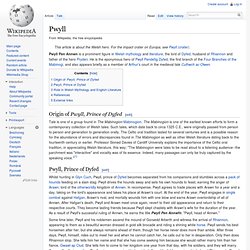
He is the eponymous hero of Pwyll Pendefig Dyfed, the first branch of the Four Branches of the Mabinogi, and also appears briefly as a member of Arthur's court in the medieval tale Culhwch ac Olwen. Origin of Pwyll, Prince of Dyfed[edit] Tale is one of a group found in The Mabinogion Mabinogion. The Mabinogion is one of the earliest known efforts to form a contemporary collection of Welsh tales. Such tales, which date back to circa 1325 C.E., were originally passed from person to person and generation to generation orally. Celtic deities. The gods and goddesses of the pre-Christian Celtic peoples are known from a variety of sources, including written Celtic mythology, ancient places of worship, statues, engravings, cult objects and place or personal names.
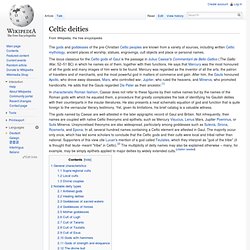
In characteristic Roman fashion, Caesar does not refer to these figures by their native names but by the names of the Roman gods with which he equated them, a procedure that greatly complicates the task of identifying his Gaulish deities with their counterparts in the insular literatures. He also presents a neat schematic equation of god and function that is quite foreign to the vernacular literary testimony. Yet, given its limitations, his brief catalog is a valuable witness. General characteristics[edit] Supra-regional cults[edit] Sidh. Un article de Wikipédia, l'encyclopédie libre.
Sidh - Encyclopaedia Pagana. Pour les druides, les celtes, comme pour toutes les religions antiques, la mort était une partie naturelle des cycles d'existence des êtres et du monde. Selon cette conception, lorsque la vie physique cesse, l'âme visite d'autres lieux, expérimente dans l'autre monde. Les mythes et légendes celtes relatent comment l'âme des disparus demeure dans des îles fantastiques et mystérieuses; comme Avalon, ou se cache dans des tertres ou des cités sous-marines comme Ys, montrant ainsi que jamais les celtes n'envisagèrent la disparition de la vie après la mort. Avalon, Tir Nan-Og, le Sid, vous voyez qu'on peut lui donner beaucoup de noms, mais cela au fil des légendes et comme vous le savez chez les celtes tout n'est qu'un… Nous n'avons pas de description précise ni même très valable de l'autre monde des celtes, mais un texte grec parle des barques de pêcheurs qui servent à passer les âmes….
L'irlandais Sid signifie "paix", en gaulois "sedos" c'est-à-dire la "demeure des dieux". Découverte exceptionnelle d'une tombe princière dans l'Aube. Mythologie celtique. Un article de Wikipédia, l'encyclopédie libre. La mythologie celtique est constitutive de la religion des Celtes de la Protohistoire/Antiquité. Nos connaissances sont lacunaires puisque les sources dont nous disposons sont gauloises, plus précisément gallo-romaines, galloises et irlandaises, alors que la civilisation celtique a concerné une grande partie de l’Europe.
Elle est protéiforme puisque le nombre des dieux véritablement panceltiques est restreint et que les évènements mythiques diffèrent. Il y a cependant des correspondances entre les divinités des différentes zones géographiques, des équivalences dans les mythes et l’omniprésence des druides, tant en Gaule que dans les îles Britanniques. Des éléments importants de la mythologie celtique ont été repris dans le corpus littéraire appelé Matière de Bretagne, notamment dans le cycle arthurien. La problématique des sources[modifier | modifier le code] Sur le chaudron de Gundestrup (IIe siècle av. Gaule[modifier | modifier le code] Celtes. La civilisation celte : Noyau territorial Hallstatt, au XIIe siècle av. J. Religion des Celtes. Portail:Monde celtique.
Une page de Wikipédia, l'encyclopédie libre. Sauter à la navigationSauter à la recherche Monde celtique Le portail Monde celtique est un portail Wikipédia ayant pour objectif d'offrir un accès aisé à l'ensemble des articles de Wikipédia ayant trait aux Celtes de l’Antiquité, mais également aux nations modernes qui revendiquent une identité celtique. Participer au projet Il existe de nombreux moyens pour aider à améliorer les articles sur le monde celtique :